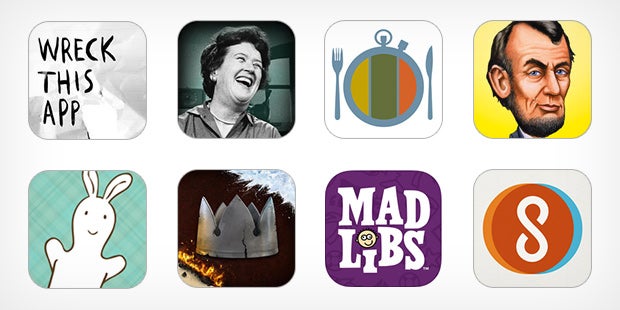With more than 1.5 million apps available in Apple’s App Store, the business of book apps is a competitive landscape. We spoke with Katherine McCahill, senior director of digital development, to find out how Penguin Random House approaches this space, and what the future of book apps looks like.
Q: First, what’s the state of apps right now?
A: Today, with such a crowded marketplace, it’s extremely difficult for new apps to get noticed. Gone are the days of making $1 million from a simple flashlight app! Lower-priced devices in developing markets, smartwatches, and fitness trackers, as well as trends in home automation, have inspired waves of new apps that have flooded the space.
Despite the crowded market, there is plenty of opportunity when it comes to apps and connecting with readers. Virtually every adult in America is a smartphone owner, spending on average more than three hours each day engaging with apps. The rise in ownership and usage of smartphones presents Penguin Random House with the opportunity to reach a larger audience with apps, and we find ourselves in a strong position for growth.
Q: How does Penguin Random House approach building book apps?
A: First, we look at who’s doing it right. The brands that succeed are creating engaging and relevant experiences that are personalized and contextual. Starbucks, ESPN, The New York Times, and Yelp are great examples of this. These apps use features such as push notifications to instantly inform users of breaking news, tailored content to fit user reading habits, geolocation to give better search results, and rewards to keep users coming back.
At Penguin Random House, we’re similarly developing digital products that enhance, extend, and complement our authors, brands, and titles, and that engage with readers by providing value. If a product can’t build a two-way relationship, then it might not be the right thing for us to undertake.
Q: For how long has Penguin Random House been creating apps?
A: We’ve been part of the app revolution since the beginning, experimenting early with iPhone apps (Mad Libs went on sale in August 2009) and producing innovative and award-winning apps like Pat the Bunny, Wreck This App, Mastering the Art of French Cooking, The Fast Metabolism Diet, Stephen Hawking’s Snapshots of the Universe, Fodor’s City Guides, and George R. R. Martin’s A World of Ice and Fire.
We experiment broadly but smartly to engage with readers everywhere and across genres. In doing so, we’ve published apps for iOS, Barnes & Noble’s Nook platform, Microsoft, and Android, and we continue to explore new platforms and technologies.
Q: What are some examples of successful book-inspired apps?
A: George R. R. Martin’s A World of Ice and Fire is a wonderful example. It’s the only authorized app based on the books and serves as a companion guide to the intricate and complex world the author has created. In the app, readers find detailed descriptions of characters, kingdoms, cultures, and religions; a detailed Journeys map that allows users to track a character’s progress through the books; and even “spoiler settings” to ensure that the app doesn’t inadvertently reveal plot twists such as who lives and who dies, in case readers aren’t up to speed in the books.
Another great example is Hayley Pomroy’s The Fast Metabolism Diet App, which helps readers following the diet to stay on track. It allows users to log their food or quickly check what foods are allowed, and sends reminders to drink water. It’s a great way to take the diet on the go and provides a service to people trying to stay on track.
Q: How do you begin to analyze if a book might inspire a good app?
A: For us, it’s less about creating premium paid products and driving revenue—though we’ll still do that when the right situations come about—and more about leveraging mobile and apps to build and enhance relationships with readers.
Our product managers work closely with publishing teams to assess potential projects. When an idea surfaces, the first step is to conduct a thorough market and competitive analysis. We look at the sales history for a particular author or series, and discuss the target audience in order to gauge the market size and user base. For us to move forward, there needs to be potential for fairly massive scale. Finally, we look at whether there are similar apps in the market and start to figure out what our distinguishing features and functionality could be. If these initial checkpoints give favorable results, then we discuss next steps with the author’s publishing team and take it from there.
We’re always walking a fine line to ensure that apps include content and functionality that is compelling but doesn’t compete with the book. Our goal is to find new audiences and create meaningful experiences for fans to stay engaged with the work—and ideally to drive them back to purchase more books.
Thanks, Katherine!
Katherine McCahill is the Senior Director of Digital Development for Penguin Random House.
Andrea Bachofen is Associate Director of Publishing Development and Author Platforms for Penguin Random House.


